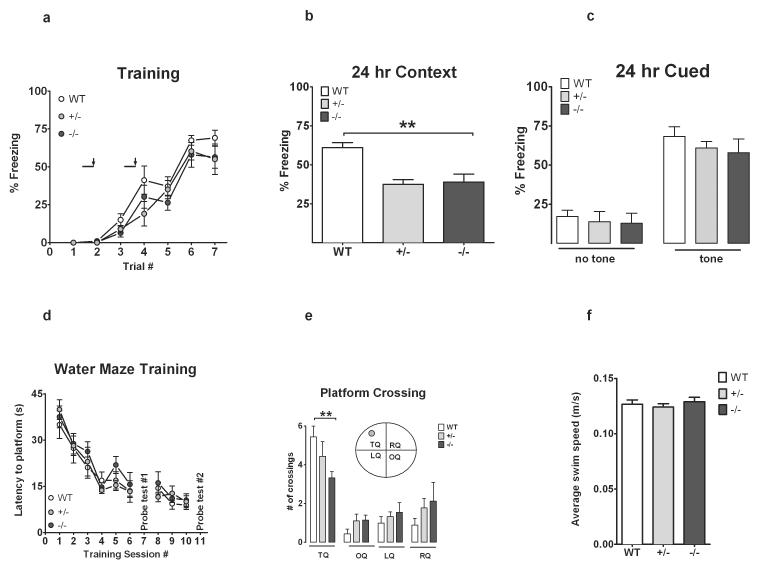Figure 3.
CX3CR1−/− mice show impairment in contextual fear conditioning and Morris water maze memory function. CX3CR1−/− (black circles) and CX3CR1+/− (gray circles) are compared to littermate wild-type mice (white circles). In panel A, a tone (solid bar) was paired with a foot shock (arrowhead) at 2 and 4 minutes. Freezing behavior is shown on the day of training for CX3CR1−/−, CX3CR1+/− and wild-type (a) and is comparable in all groups. CX3CR1−/−, CX3CR1+/− showed significant reduced freezing response compared to wild-type, when tested 24 h following training (b). CX3CR1−/−, CX3CR1+/− showed normal freezing to cue component compared to controls (c). Asterisks represent p<0.01. Panels d and e show the hidden platform version of Morris water maze task. Mean latency to escape from a pool to hidden platform across training days (d). A first probe test was performed on day 7 and a second probe test was performed on day 11 (e) to determine the number of pseudo platform crossings in the target quadrant (TQ) compared to the opposite quadrant (OP), the left quadrant (LQ) and the right quadrant (RQ). Wild type (WT, white bar), CX3CR1+/− (gray bar), CX3CR1−/− (black bar). All data are presented as mean ± SEM p < 0.01. All data are presented as mean ± SEM p < 0.01

